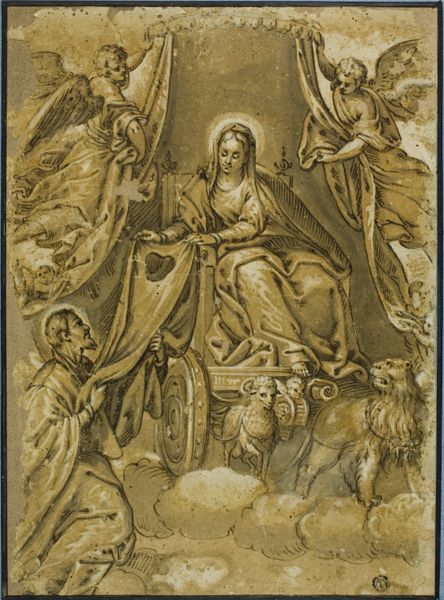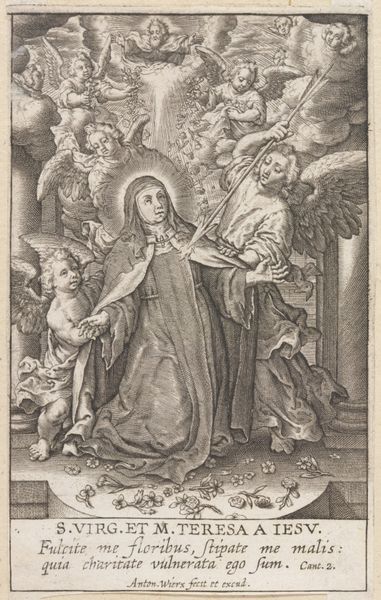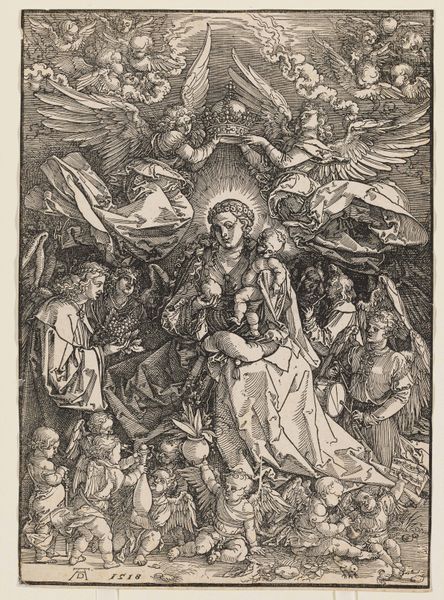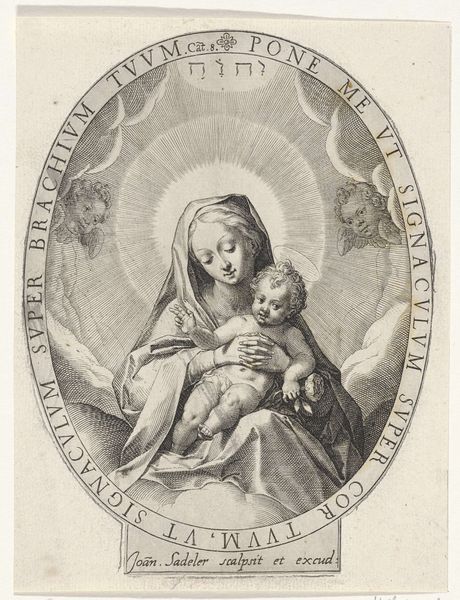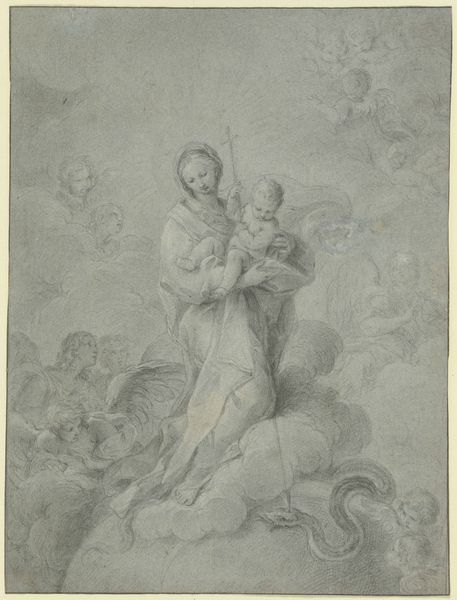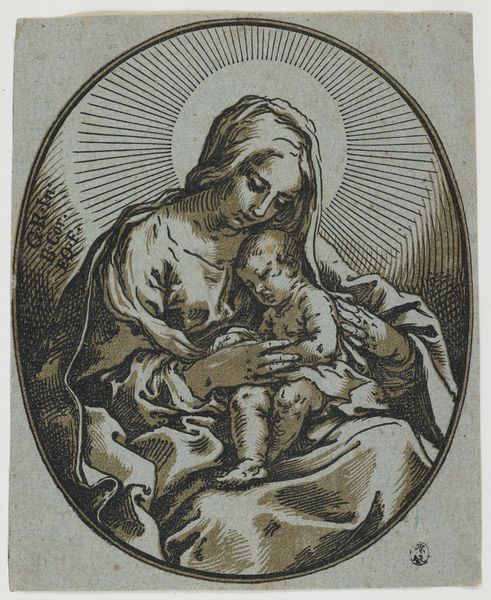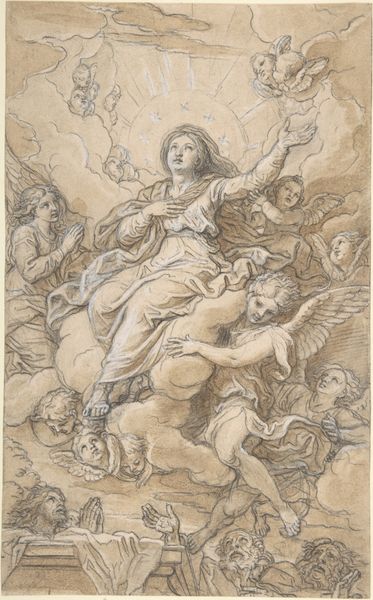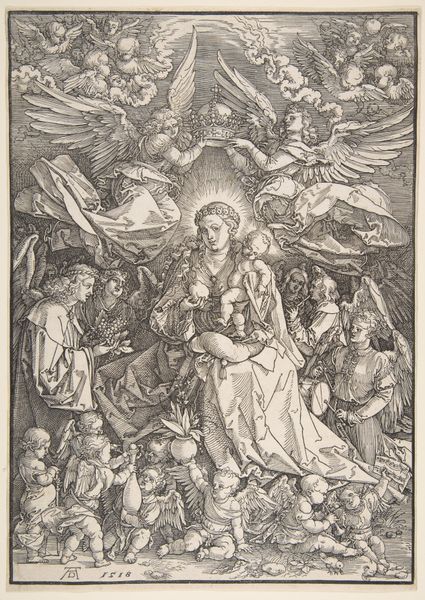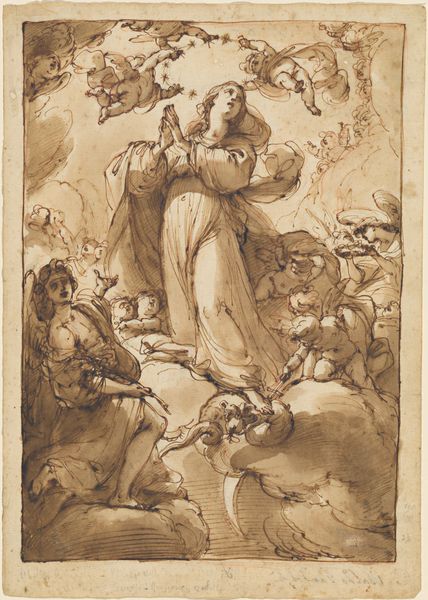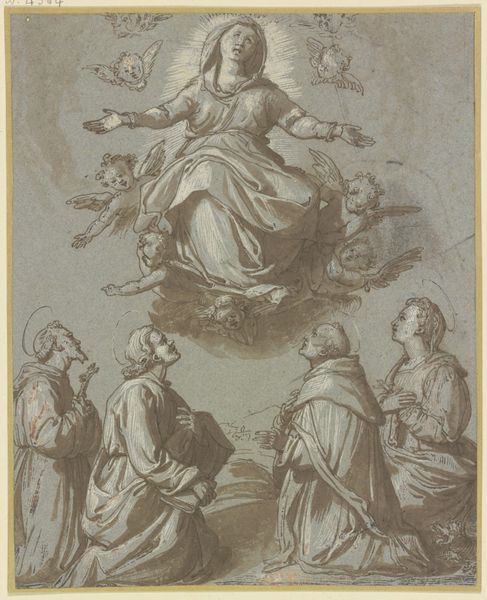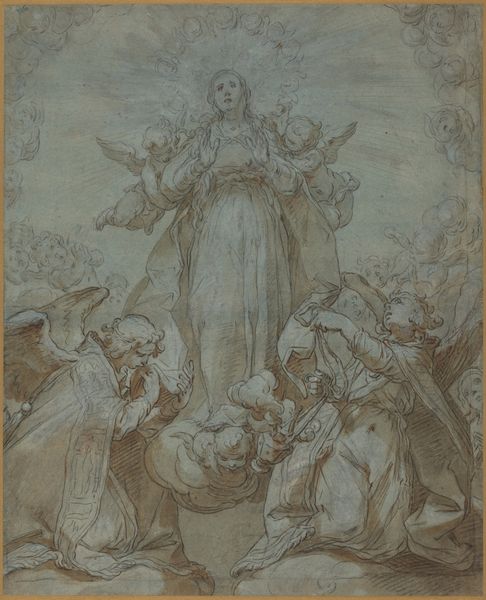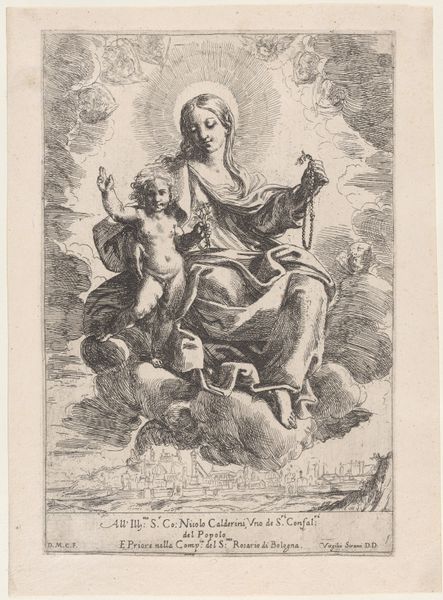
The Virgin and Child Surrounded by Little Angels in the Clouds 1585 - 1595
0:00
0:00
drawing, print, paper, ink
#
drawing
#
narrative-art
# print
#
mannerism
#
figuration
#
paper
#
11_renaissance
#
ink
#
child
#
angel
Dimensions: Overall: 4 3/4 x 3 3/8 in. (12 x 8.6 cm)
Copyright: Public Domain
Curator: Looking at this, I am struck by the textures created using what looks like brown ink on paper; such subtle washes of grey to represent weight and form. Editor: Indeed! We’re currently observing "The Virgin and Child Surrounded by Little Angels in the Clouds," a drawing by Friedrich Sustris, likely created between 1585 and 1595. It currently resides at the Metropolitan Museum of Art. It gives off an air of delicate but controlled intensity. The mannerist style emphasizes line and grace, all balanced just so. Curator: I agree about the control; however, let's also consider the economics that shaped the making of this piece. Consider the cost of ink during the late Renaissance; not cheap. Pigment was expensive, processing laborious. Paper too, depending on its grade. So, this piece may speak to Sustris’s patrons as much as to artistic ideals. Editor: Your points about material conditions are relevant. However, do they diminish the formal construction here? Note how the implied circular space draws the eye. From the praying Virgin up to the angel's wings and back down the other side, our gaze remains captive. The Virgin's downcast eyes are, simply, masterful, capturing humility in that single stroke. Curator: And that gaze may mean very different things across classes! Those at court versus those who were poor might well think very differently about humility then. Who had time to contemplate the virtue of the Virgin then; especially if working fourteen hours a day on somebody's estate? It seems the narrative and its audience mattered a lot. Editor: Certainly. Yet, even factoring in varied reception, the artwork’s capacity to orchestrate affect through form endures, would you agree? To experience what is represented and how it is conveyed. That semiotic tension remains potent. Curator: Okay, I agree with that; if we’re going to acknowledge our role in the process of meaning-making. Considering labour allows a rich perspective on aesthetic appreciation. Editor: Precisely! Such considerations highlight that interplay of elements; always embedded, yet forever reaching for transcendence.
Comments
No comments
Be the first to comment and join the conversation on the ultimate creative platform.
